Caring for your pipeline means nurturing your leads so that they move from one step of your sales process to the next.
Suppose you’ve had a meeting with a prospect who is interested in your services but, doesn’t need you right away. What kinds of communication will deepen the relationship and move the prospect toward the close? Here are some examples of lead nurturing activities, ranked in order from shameful to most effective:
1. Bad: Not following up
The most basic crime of pipeline neglect is to not follow up at all. Throughout my career, I have been shocked at how many salespeople and business owners simply fail to follow up with someone when they don’t close a sale in the time frame the seller wanted. Business development done right does not offer a lot of instant gratification. You may wish you got that check today, but you’ll never get it if you don’t follow up.
2. A little better: Leaving a check-in message or sending a quick email
Leaving a message for a prospect is better than not following up at all, but there’s certainly room for improvement. A meaningful voicemail can be a very useful tool. Unfortunately, too many salespeople suffer from the tick-mark syndrome. They leave a generic message that provides very little reason for prospects to move forward.
3. Even Better: Sending meaningful content
An even better example of lead nurturing would be finding an article that is relevant to your prospect and emailing it with a short cover note. The note would explain that you thought he or she might find the article interesting and express the desire to keep in touch. Although this won’t necessarily move prospects forward in their thinking, it does give them something to think about.
4. Best: Deepening the relationship
An example of the best kind of follow-up would be sending the same article but including a different kind of note. This note would explain how the article applies to the issues that the prospect discussed with you during your meeting and how your company can help with that very challenge. The note would also offer a date and time to discuss how you can help the prospect in a specific way. Sending this kind of note means you’ve done some detailed thinking about your prospect and offered a communication that is content rich, deepens the relationship, and asks for a next step that offers benefit to the prospect.
Here’s another example. Recently I arranged for a client to address an industry association during a general session to make attendees aware of an exclusive member benefit: Sales Tele-Huddles (which I do for the association). This gave my client the ability to say a sentence or two about her company (1/4 of the people in the room are prospects of hers), help the association tout its member benefits to sponsors, members, and potential members, while at the same time providing exposure for me. A win-win-win. How did I dream this up? By thinking carefully about the people in my world and what would help them most. For a list of lead nurturing strategies, which actually nurture leads, go to http://bizdevdonerightbook.com/leadnurturingstrategies/.







